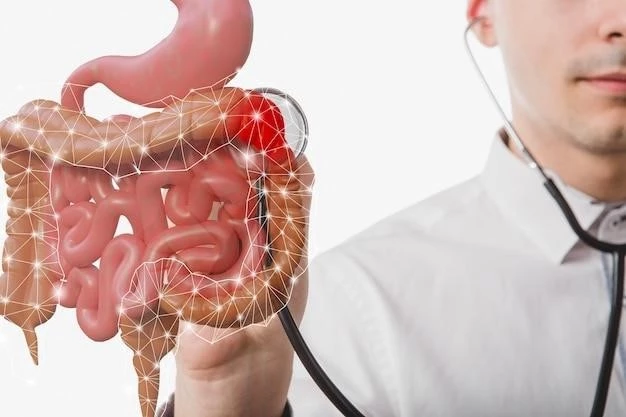Barrett’s Esophagus involves stomach acid irritating the esophagus. Symptoms may include heartburn and difficulty swallowing.
Causes and Symptoms of Barrett’s Esophagus
Barrett’s Esophagus is typically caused by long-term gastroesophageal reflux disease (GERD), where stomach acid backs up into the esophagus. Symptoms may include frequent heartburn, difficulty swallowing, chest pain, and upper abdominal pain. It is important to seek medical attention if you experience persistent symptoms to prevent complications.
Overview of Treatment Options for Barrett’s Esophagus
Treatment options for Barrett’s Esophagus aim to manage symptoms and prevent complications. Approaches may include medications to reduce stomach acid, lifestyle modifications such as avoiding trigger foods, and endoscopic therapies to remove abnormal cells. In some cases, surgery may be recommended to prevent further damage to the esophagus. It is crucial for patients to work closely with healthcare providers to determine the most appropriate treatment plan based on individual factors.
Dietary Recommendations for Barrett’s Esophagus
Individuals with Barrett’s Esophagus should focus on a diet that helps manage acid reflux and reduces irritation to the esophagus. Recommended dietary changes may include avoiding spicy foods, acidic foods, caffeine, and alcohol. Eating smaller, more frequent meals, staying upright after eating, and maintaining a healthy weight are also beneficial. Consulting with a healthcare provider or a dietitian can help create a personalized diet plan that supports overall esophageal health.

Barrett’s Esophagus vs. GERD⁚ Understanding the Key Differences
While both Barrett’s Esophagus and Gastroesophageal Reflux Disease (GERD) involve stomach acid affecting the esophagus, they are distinct conditions. GERD is characterized by occasional heartburn and acid reflux, whereas Barrett’s Esophagus is a more serious complication of long-term untreated GERD. Barrett’s Esophagus involves changes in the lining of the esophagus and carries a heightened risk of developing esophageal cancer. Proper diagnosis and management by healthcare professionals are essential in distinguishing between the two conditions and providing appropriate treatment.
Complications Associated with Barrett’s Esophagus
Barrett’s Esophagus can lead to several complications if left untreated. These include an increased risk of developing esophageal cancer, esophageal strictures (narrowing of the esophagus), and Barrett’s esophagus-associated dysplasia (abnormal cell changes). Regular monitoring and proper management of Barrett’s Esophagus are crucial to prevent these potential complications. Healthcare providers may recommend regular endoscopic surveillance and lifestyle modifications to reduce the risk of progression to more severe conditions.
Screening Guidelines for Barrett’s Esophagus
Screening individuals at higher risk for Barrett’s Esophagus, such as those with chronic GERD symptoms, is essential for early detection. Endoscopic screening is the most common method to diagnose Barrett’s Esophagus by examining the esophagus lining for abnormal changes. Guidelines recommend screening for individuals with risk factors to detect Barrett’s Esophagus early, allowing for timely intervention and management; Regular follow-up screenings may be necessary based on individual risk factors and healthcare provider recommendations.
Risk of Esophageal Cancer in Barrett’s Esophagus Patients
Individuals with Barrett’s Esophagus have an increased risk of developing esophageal cancer compared to the general population. The risk varies depending on factors like the extent of changes in the esophageal lining and the presence of dysplasia. Regular monitoring through endoscopic surveillance is crucial for early detection of any precancerous or cancerous changes. Healthcare providers may recommend surveillance intervals based on the individual’s risk profile to effectively manage the risk of esophageal cancer in Barrett’s Esophagus patients.
Tips and Advice for Living with Barrett’s Esophagus
Living with Barrett’s Esophagus involves adopting lifestyle changes to manage symptoms and reduce complications. Tips for individuals with Barrett’s Esophagus include maintaining a healthy weight, elevating the head of the bed while sleeping, avoiding trigger foods like spicy and acidic items, quitting smoking, and managing stress levels. Regular follow-up appointments with healthcare providers for monitoring and discussing any concerns are essential. It is important for patients to adhere to their treatment plan and make necessary adjustments to promote esophageal health and overall well-being.
